
The simple pleasures of IDY baking

We have a boatload of new participants on TFL, many drawn, or reacquainting themselves, to bread baking in the era of quarantine. This write-up is for you!
I go back to basics once in a while, and re-familiarize myself with my baguette roots.
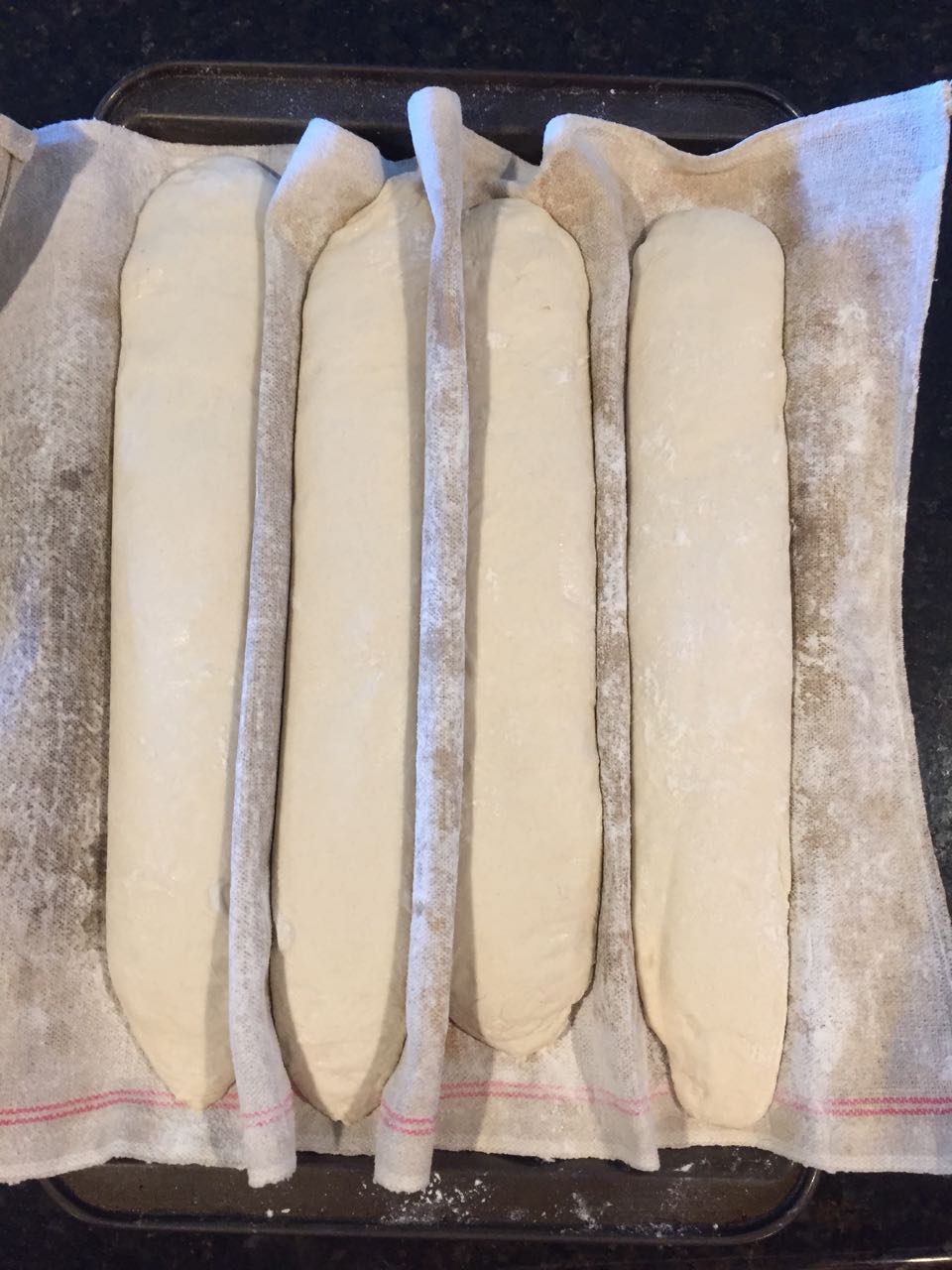
I know. The sourdough/levain train pulled into the station some 15 years ago for home bakers, many of whom never looked back. And left behind in its wake its prior favored commercial yeast siblings, ADY and IDY. Often forgotten and, to me and many professional bakers, much maligned. As you likely know, the classic French baguette is made with commercial yeast, whether it be cake yeast, ADY or IDY. And when made well, they are still a beauty to behold and eat.
I also mostly snubbed IDY once I adopted, and adapted to, my precious levain. I’ve only ever made one from scratch, years ago now - the pineapple juice solution version, and my levains of today are the great grandchildren of that initial concoction. But I sometimes like going back to where it all began for me.
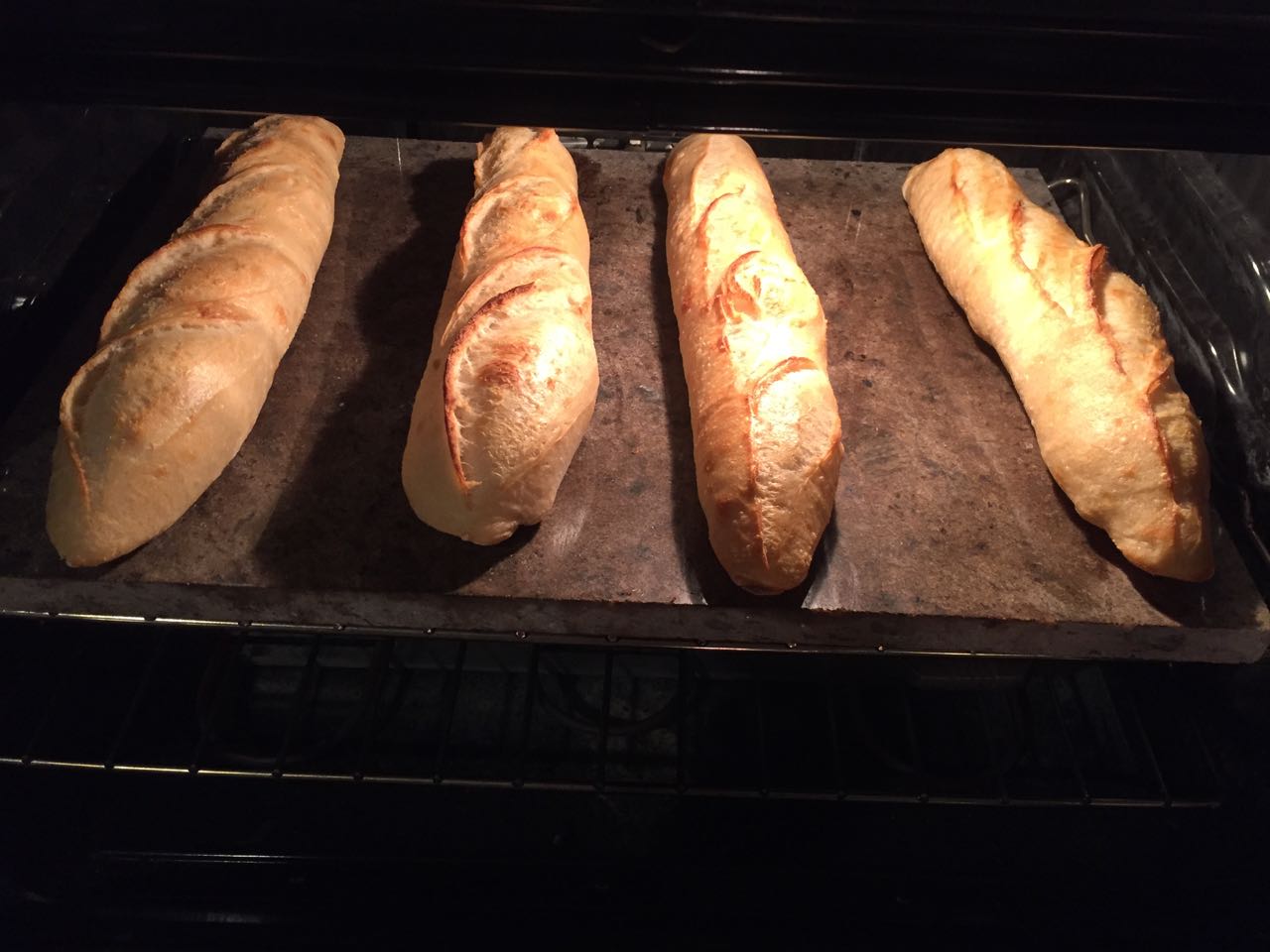
Dedicated to those of you who wish to:
- admit that IDY has a valuable place in the lexicon.
- get a feel for higher hydration dough handling.
- sharpen or develop your nascent baguette shaping skills.
- don’t faint at the sight of a dough lacking in whole grains.
Just the other day I had the bright idea to bake a batch of the Anis Bouabsa baguettes. This is the one that put me on the board. To learn more of my connection to M. Bouabsa and his marvelous creation, see the link above.
Short of an IDY no-knead bread, this is perhaps the simplest bread with real quality that one can make.
- 75% hydration - which is quite high for an all AP/Bread flour dough.
- 0.16% IDY, an insanely small percentage of commercial yeast when not added to a levain dough.
- No preferment.
- Incorporates a bassinage - 2nd hydration during mixing.
- Takes 60 minutes to rise in a warmed evironment with Letter Folds at 20, 40 & 60 minutes.
- Then refrigerated ~ 20 hours.
- Develops a silky, ultra extensible character.
- Has a minimal amount of stickiness to it.
- Just about rolls itself out into baguette shape.
- Demonstrates exceptional oven spring under steam.
- Yields a lovely open crumb.
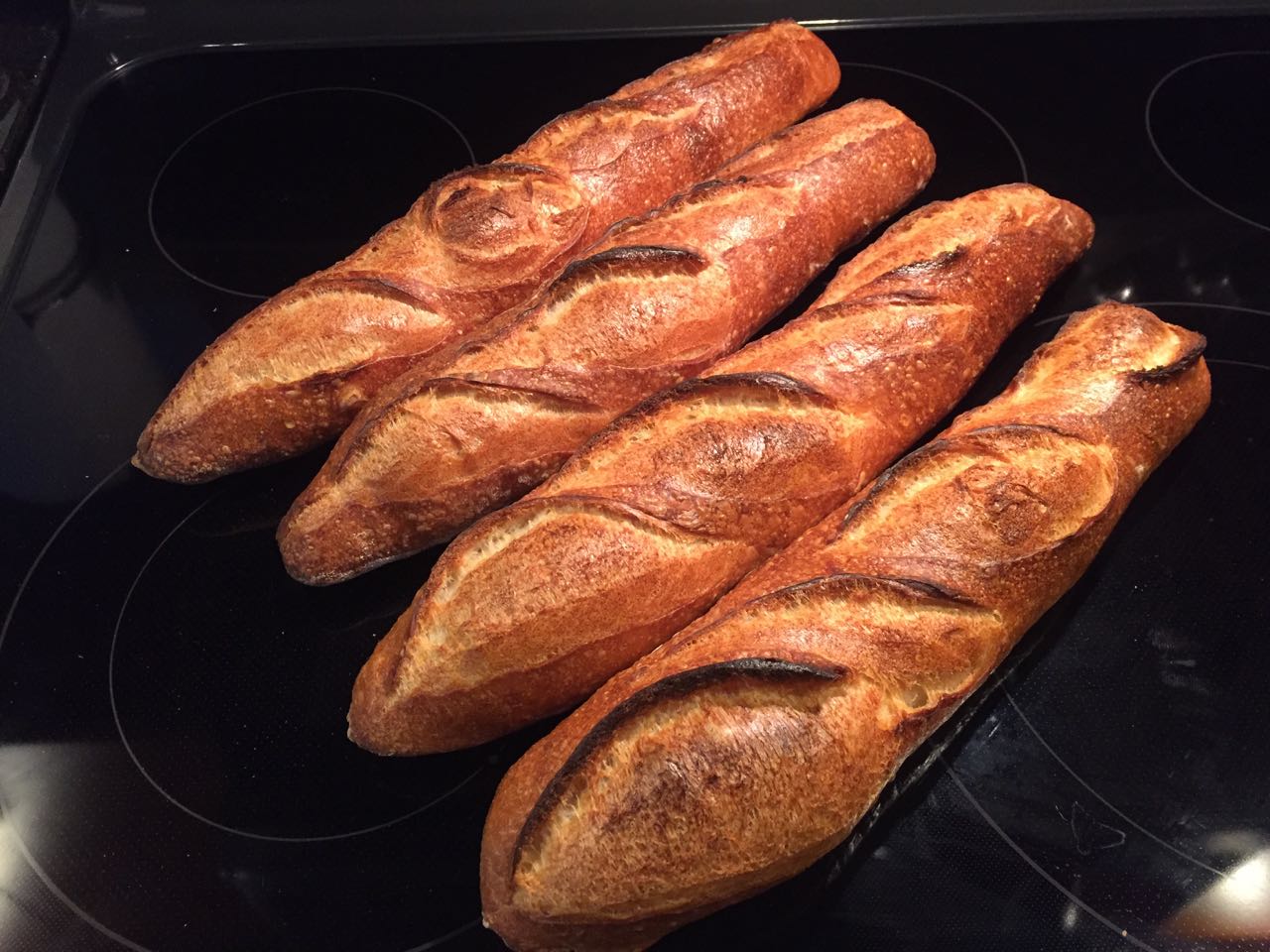
Should you decide to tackle this dough by hand mixing, be aware that after bassinage the additional water will be a bit of a challenge to incorporate. Adding partial amounts of the bassinage water between incorporation will help some. So will giving the dough a 5 minute rest before the a final pinch and fold in the bowl and the beginning of the French Folds. The dough will come out of the mixing bowl as a pile of wet completely disorganized goop. Much caution advised here!, but wiithin the first ~20 French Folds the dough will begin to organize and take form. From there on out will behave quite nicely.
If you do Letter Folds on the workbench, wet the area that the dough will be on to prevent it sticking to the surface.
There’s ample write-up on TFL about the development of this version of the formula going back to 2009 and the collaboration between dmsnyder and janedo.
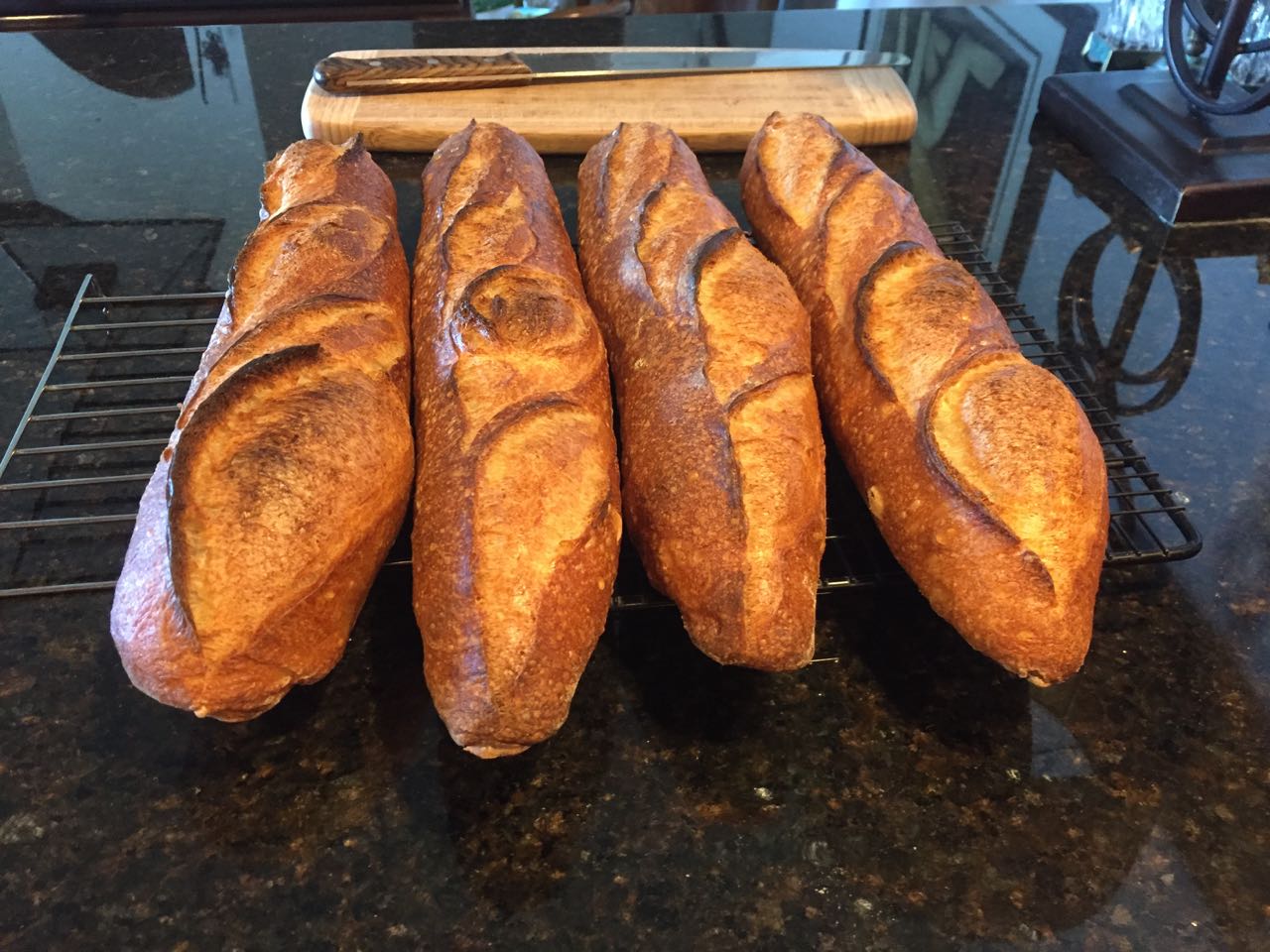
If I was able to pique your interest in trying out this dough, you will be rewarded with a refreshingly light and delicious high hydration, open crumb, crisp crust bread that blooms beautifully in the oven. And at the same time, developing your high hydration dough handling, and perhaps hand mixing skills. And for each baguette, you will have multiple scoring opportunities.
You will likely not be disappointed, and the experience will be richly rewarding!
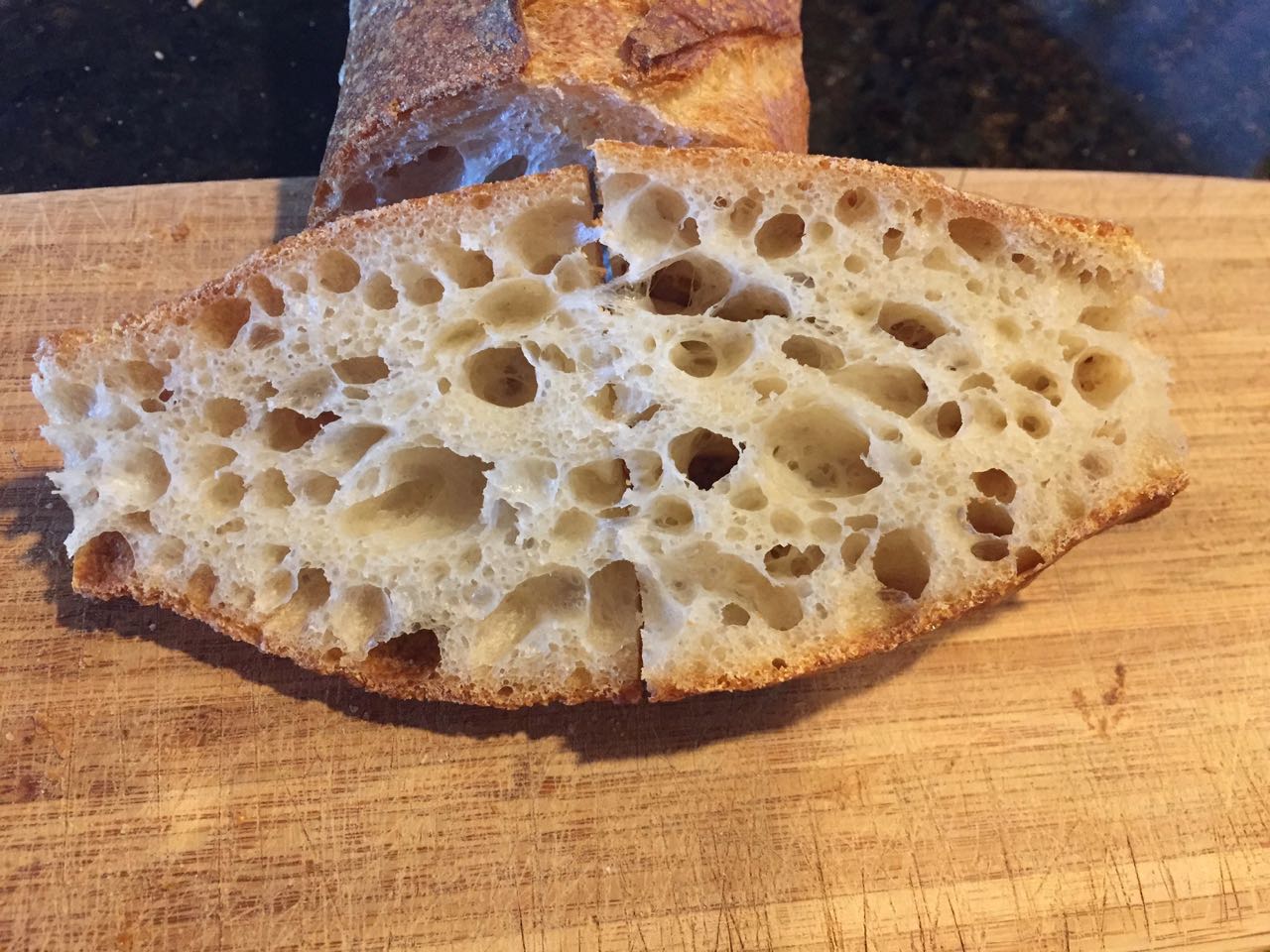
End note: if baguettes are not your thing, or you feel it is beyond you right now, the same dough can be formed into batards or boules or bunny rabbits. What ever suits you.
| Bouabsa Baguette | ||||||||
| dmsnyder, janedo | ||||||||
| Total Dough Weight (g) | 1000 | |||||||
| Total Formula | ||||||||
| Ingredients | % | Grams | ||||||
| White Flour | 100.00% | 564.5 | ||||||
| Water | 75.00% | 359.8 | ||||||
| Water 2nd bassinage | 63.5 | |||||||
| Salt | 2.00% | 11.3 | ||||||
| IDY | 0.16% | 0.9 | ||||||
| Totals | 177.16% | 1000 | ||||||
| Mix IDY into water, then flour. Pinch and fold. Autolyse 30 min. | ||||||||
| Add salt. Add bassinage a portion at a time, pinching and squeezing dough to incorporate | ||||||||
| Affter bassinage, let dough rest covered for 5 min. Then final mix and dump onto workbench. | ||||||||
| 300 French Folds. 150 FFs, 5 min. rest coverd, 150 FFs. | ||||||||
| Into oiled covered container. Letter Folds at 20, 40 & 60 min. Retard for a total time of ~20 hrs.. | ||||||||
| At some point a few hrs in, flour workbench well then divide, pre-shape and shape dough into baguettes. | ||||||||
| Dough should be scaled to approx. 330 grams each. | ||||||||
| Onto well floured couche, cover and bakc to retard. | ||||||||
| Preheat oven to 500dF for ~ 1 hr. | ||||||||
| At bake time, remove baguettes, move onto baking peel and score. | ||||||||
| Load into 480dF oven to bake, and steam well for 13 min. | ||||||||
| Release steam and rotate baguettes in oven. Bake another 10-13 min. | ||||||||
| Vent oven, now off for 2 min. Then remove baguettes to cooling rack. | ||||||||
Progression from goop to ooh-la-la during French Folds
1. Just out of the mixing bowl. A pile of disorganized goop.
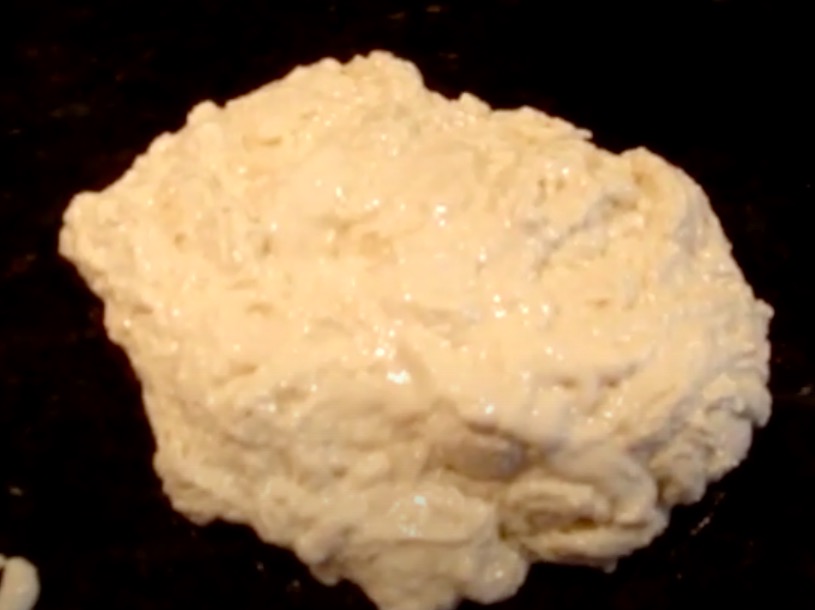
2. The first ~10 French Folds will look like this. Drawing the mass up.
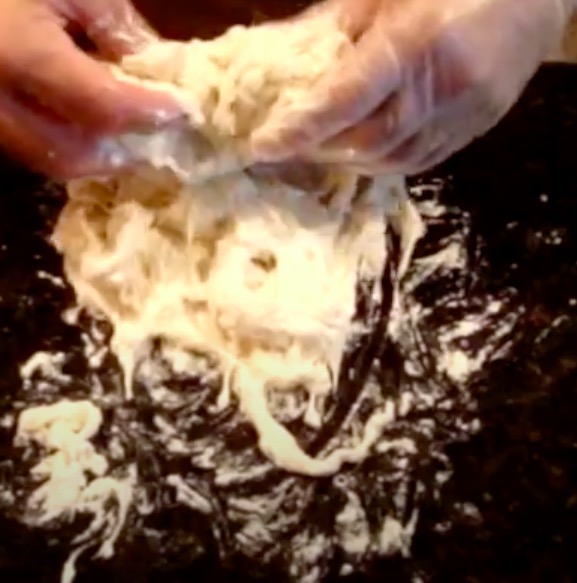
3. Preparing to flop it over on itself.

4. The mass after ~20 FFs. Organization is already happening.
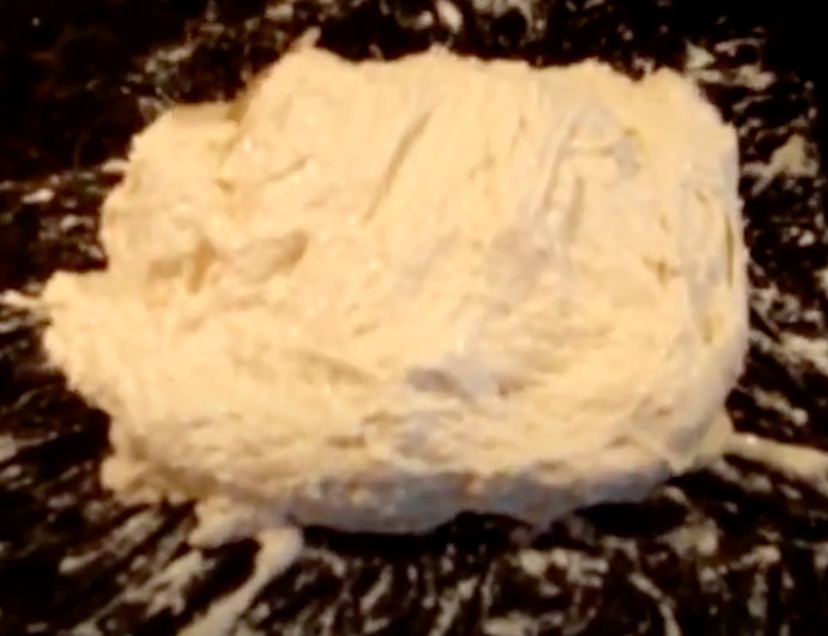
5. After close to 300 FFs. We now have something that looks like, and will act like, dough.
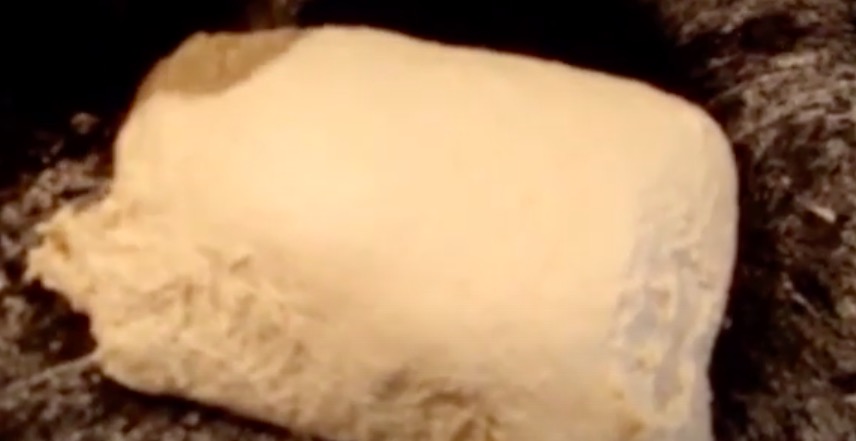
6. After just 20 minutes of bulk rise, the first of 3 Letter Folds. the extensibility of this dough is amazing.
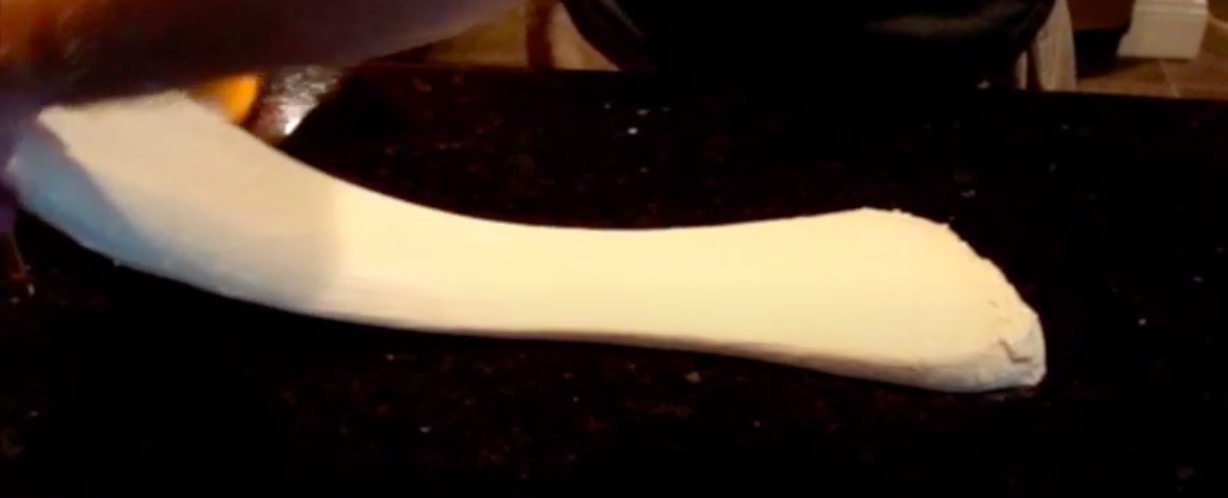
350g x 4 baguettes/long batards


Comments
I think I might make these! I have a bunch of yeast in the fridge that’s going to expire soon. Time to use some up.
since before my chin hairs came in ;-) . This formula is so simple that it will make everything else you do in your prolific baking, seem like a cakewalk. I don't feel as though it is a "step down" to return to IDY, just another tool in the kit to be pulled out when desired or needed.
As the long ago US TV commercials said "try it, you'll (maybe) like it"!
thanks, alan
How much by volume is .9 of a gram? 1/8 teaspoon? My scale doesn’t go that low.
Oh and I am using my mixer! Screw the slaps and folds! ?
https://www.traditionaloven.com/conversions_of_measures/yeast_converter.html
.29 tsp!
Be careful at the initial bassinage incorporation stage. You don't want to be wiping down the walls and floors with white liquid splotches.
Good luck, and looking forward to the report back!
1/3 of a tsp which of course I don’t have so I am going to use 3/8 of a teaspoon. Close enough?
I put a tad less than that in. Lol
Alan, as usual your skills shine both as a baker and a writer.
How many total French folds? Did you stop around 300? Or was that the point at which the mass began to act like dough and you kept going?
Happy baking -- stay safe and healthy.
Ted
--------
Edited because I see 300 in your recipe -- but I still ask have you tried more than 300 in the past and noticed that more will have any additional effect?
so I've no idea what would happen. Maybe even 300 is too much? I initially started out at 200. Then at some early point I felt it wasn't enough so added another hundred to it. No other rhyme or reason to have done that. However, I did find that giving the dough a covered ~5 min. rest after half of the FFs paid significant dividends. In just that short time, it quickly became apparent that the dough was already relaxing and the gluten was beginning to become organized. And it made the final 150 FFs much smoother and easier. Particularly on stiff doughs. And I never looked back!
Thanks Ted, alan
Masterful baguettes, someday I will have to try making baguettes but I don't feel that I'm up to it yet. I have bookmarked this post though for that future me to make.
Benny
"throw-away" exercise. Little time or effort need be invested just to see how the dough responds. Even if you are shy about tackling baguette shaping just yet. It makes a wonderful simple and "sweet" tasting bread with an open crumb and a crisp crust regardless of the final form.
thanks, alan
My long time lurking here started with the Bouabsa baguettes that you refer to. I had tried other recipes but this was the one I had settled upon as my favorite. Yesterday in celebration of white flour returning to our local supermarkets I made a double batch of them and was going to post a blog about them. When I saw your post it made me think there is now a baguette virus going around. I have tried to make a sourdough version and they tasted good but did not have the characteristics I like in a baton. This is a versatile recipe that I use for pizza, ciabatta, and all things white and holey. The only change I made in yesterdays bake was the mixing and folding. I used the Ribaud mixing in the bowl until the dough just comes together and then instead of the four points of the compass fold I used two of the now in vogue coil folds.
A number of times, I tried to get a "Baguette Brigade" started on TFL, with few, if any, takers. Many times I've read comments about how "someday" I'll try it, or I don't have the skills, or it seems too hard, or or or... And if they want to but don't, that may sadly be their loss. Just because it feels so right for us doesn't make it right for anyone else.
One of the absolute best was kendalm who was as tenacious and meticulous as txfarmer. And he didn't settle for these measly "long batards". He was into getting a full sized baguette by loading his dough into his oven sideways. Superb results, but about 2 years ago he just disappeared. I'm sure that you've seen quality folks come and go from TFL too.
I wish that you'd also post your comment and pictures because maybe there is strength in numbers! Especially because it is the same formula. Folks will only see your superb work if they happen to select my entry and then have the patience to scroll down far enough. Even just a post with a link to your comment here would do. I don't want to be bold enough to do it for you myself, that really isn't my place. But I think that you should. You took pictures for a reason, no?.
Agree with the versatility, as I've also used it for pizza and focaccia. Easiest on the market. There is also the Philipe Gosselin IDY version out there, posted by DonD and/or David many years ago. Certainly worth a try.
If you've seen my other posts, my thing for a long time, and still is on occasion, to find a formula that looks interesting, IDY or levain, and turn it into baguettes. Even more fun if my google search finds no references to anyone else doing it before.
As far as mixing and folding, I'd also mentioned that there are dozens of ways to do it right, and probably as many ways to do it wrong too. Whatever step the "it" is.
Your're getting fantastic oven spring on yours too. Thanks for posting!
alan
Great story about your trip to Paris to meet the man. My first attempts towards artisan breads was baguettes after graduating from pizza crust. I did try the Gosselin from Reinharts BBA and while the taste was better I wanted to roll my own instead of a ciabatta type baguette. Lots of great posters have come and gone. SteveB from Breadcetera was an early influencer as were many of the other people posting about Bouabsa recipe. I will try to figure out how to post this separately and to call the baguette brigade to the parapets. Viva le white flour
Before autolyse:


After mixing (5 minutes mix, 5 minutes rest, 5 minutes mix);
After last set of letter folds:
Bad shaping:
With a little digging I could find one or two dozen other comments to point you toward. But this one has some apropos words and sentiments, maybe not most, but some. Which should give you heart. Another baker decided to throw his baguette hat into the ring yesterday, although with David's San Joaquins rather than these. My comments to him just this morning... http://www.thefreshloaf.com/node/63560/san-joaquin-baguettes-i#comment-454642
If your mixing developed a decent dough, then you should have enjoyed the 20, 40, 60 minute folds and appreciated the extensibility and handling. And also been impressed at how developed a dough could become within a single hour of bench time while using mere grains of IDY.
And as I've said to may others "the first 10,000 are the hardest".
For entertainment purposes (only) here are some of my earliest attempts. No snickering please.
Yes the dough really was very extensible during the first set of folds. It tightened up considerably for the other two sets.
The only area that gave me a tad of difficulty was the bassinage. The dough was just going around in circles with the middle part being mixed and the rest just swimming in the water even though I added it gradually. I finally stopped the mixer and got my hand in there to squish the dough and water together.
Even so, my dough was no where as loose as the dough you show in your pictures or in your videos. (Yes, I creeped your videos on YouTube) ?. I know that my flour is quite absorbant and that 75% hydration is what I usually deal with. Maybe I should have upped the water a bit.
Oh shaping was interesting! I’m am not the best at rolling out coils in pottery so I knew I wouldn’t be great at shaping. I had to give the dough a few rest breaks to be able to get it to stretch to the length I wanted. Very elastic dough!
Anyhow, it’s sitting in the fridge snuggled in and covered with my brand new never used couche. (Yes, I rubbed a mixture of rice and bread flour into it before putting the baguettes on it.) I’ll post pictures tomorrow when they come out of the oven. Even if they don’t look good, they’ll taste awesome! ?
PS. Have you ever done these with a bit of wholegrain in them? It honestly felt very weird to use straight bread flour.
That's the one where it's necessary to get your hands involved in the mix. One of the few times I use a mixer is for ciabatta, and I'll need to do the same during the bassinage addition. Tilt the mixer head up and get my hands in there to squish around during the incremental additions of water.
Your last comment had me do a tad of research through my spreadsheets just now. More like - have I ever done these without a bit of whole grain. Well, not these, but it is few and far between where I have any formula that doesn't ask for a whole grain, even at the smallest percentage. A Pain Rustique, an Abel Sierra "baguette au levain", most of the ciabatta breads and pure standard baguette formulae with poolish. I have similar Pain au Levains but they all use another grain.
Shaping baguettes can be a humbling experience, although I've seen a fair share of folks who get a pretty good shape the first time out of the gate. No surprise that I find that these, as well as most other doughs, are more easily shaped once they've been retarded for a few hours.
Best of luck with these! alan
I would recommend hand mixing to prevent overworking the dough or a short mix if you want an open crumb. I hold back about 10 grams of water to add with the salt to dissolve it. An elastic dough is hard to work with and so is an overly extensible one. How long it sits on the counter before retarding in bulk is a key factor. I got nice results with your sleepy ferret folds. Can't wait to see them out of the oven.
Alan, how do you transfer the couche (with the shaped baguettes between the folds) into the refrigerator without casualties? During the times that I have used my couche, it sits on our kitchen island and I put the dough onto it (typically for ciabatta loaves) between folds, bring the ends of the couche on top to create a cover, and leave it there. I have never moved the couche with dough on it.
In a bakery, the couche would be draped over a wooden board, loaded and then placed into a rack, typically with wheels and a plastic cover.
If you look at the picture of the dough in the couche you can see the top and bottom of the pan. The length of the pan is just short of the depth of my oven. Once loaded, the pan and couche are covered in a plastic bag, end closed off and then placed into the refrigerator for a few more hours of retard. The shelf in the refrigerator is also just deep enough to accommodate the pan. It doesn't see daylight again until about 5 minutes before loading the dough into the oven.
I certainly have never made a secret of scoring and loading cold dough into the oven.
alan
Uh oh! I missed that. I have two in the oven now. Only because my pizza stone is not wide enough for 3.
cut down to size for the task. It isn't food grade but it never touches the food since the remainder of the couche flaps over the dough before inserting into the bag. There is almost always some minor level of dew/moisture that collects inside the bag when I pull the pan out of it. The couche has been wicking moisture from the surface of the dough, but there is still some slight residual dew that exists. I'd rather not have the general refrigerator air in contact with the dough or couche, or allow the dry air in there to further dry our the surface..
Looking forward to you babies emerging from the oven!
No where near as nice as yours but they taste good and the crust is really awesome!
First 2
Crumb
Last one. Did a better job scoring this one.
After hedging about this for a long time, you did it. I think they look super. Shaping is one skill, scoring is another. How they taste is the real thing. If they ever come out looking like my early efforts, just cut them up before anyone ever sees them!
Brava!
Reminds me of my favorite line from Eddie Murphy in Trading Places: "once you have a man with no legs, you'll never go back!" Same with the simplicity and taste, and crunch of these.
I have made baguettes once or even twice before but never used this recipe. It is really fairly painless. I think I might do the slaps next time just to get a more open crumb. Thanks for lighting a fire under my butt. Ha ha!
Nice blisters! The king of breads takes practice. I did not realize that you all were retarding shaped pieces. Reading and comprehension has always been a hit or miss affair with me. Besides I could never find room in my fridge. My recollection of the Dmsnyder recipe was a 1/4 tsp IDY a couple of folds as needed, 2 hours on the counter and a 21 hour bulk retard. I divide and preshape after taking it out of the fridge and final shape 20 or 30 minutes later while still cool. Final proof for me is around an hour. They are always a pleasure to eat no matter how they come out. The comfort zone is getting mighty small for all of us these days. Way to step out and have a go at it.
“ At some point a few hrs in, flour workbench well then divide, pre-shape and shape dough into baguettes.”
Do I understand you correctly? After the letterfolds place the bulked dough in the fridge. A few hours later (after dough has cooled some), divide and shape, then placed the couched dough back in to the fridge for a total retard time of ~20 hr.
Is this correct?
Should I consider lowering the hydration a bit for the first try?
Danny
let's go back to the sources for how each wrote up the retard of this dough.
Here is Janedo, where she writes: "The baguette dough has a 75% hydration, very little yeast, hardly kneaded, folded three times in one hour then placed in the fridge 21hrs. They are not fully risen when placed in the oven, it is the wet dough and the very very hot oven (250°C) that make give the volume."
And David, who writes: "Formula for Anis Bouabsa's Baguettes Flour 500 gms (about 3.85 cups of AP flour) Water 375 gms (about 13.25 oz or about 1-2/3 cups) Yeast 1/4 tsp (for instant yeast) Salt 10 gms (about 2 tsp) Mix ingredients and knead. Ferment for 1 hour, folding every 20 minutes. Refrigerate for 21 hours. Divide right out of refrigerator and pre-shape. Rest for one hour. Shape. Proof for 45 minutes. Score and Bake at 250C (480F) for 20-25 (?) min."
A distinction between what I do and what they write: it seems that M. Bouabsa retards the dough in bulk for the full 21 hours prior to dividing. What I do is just what I wrote up, divide the dough and shape it at some point and then return to retard in a couche for the remainder of those 20 or so hours.
Anyways, as I just posted the other day with the olive levain baguettes, my new M.O., at least for now, is to go directly to divide and shape from BF before any retarding of the dough.
Lowering the hydration of the dough? Maurizio's levain baguettes are the same 75% hydration. And I find that at that hydration they are a little harder to shape than these Bouabsa baguettes. The Bouabsa dough is a delight to work with. 75% and up AP formula doughs and me don't get along well when it comes to shaping, but these I can certainly handle comfortably. And so should you.
The magic of watching a straight method AP dough with a minuscule amount of IDY go from pure goop to risen in a mere hour is something to experience for yourself.
alan
I like your method of cooling the dough before shaping. It seems the dough would be a little easier to shape after cooling a bit.
Seeing your perfectly cylindrical dough sitting in the couche is a beautiful site. I for one know this is not a simple feat. That spawns a question. Is it possible to fatten (increase diameter) of a cylinder that has become thinner in one section than the surrounding dough?
because what one would be trying to do, and I've been there a "thousand" times, is to move the innards, so to speak, of the dough from one location to another after you've already "set the terms" for the dough's final shape via the initial shaping. This is why the craft, to which I am still a nascent student, of getting a good shaping all the way down the length of the dough is so critical. And the more one toys with trying to move that misshapen mass inside, the more one compromises the integrity of the dough.
As far as possible, it brings to mind a story that my father-in-law repeats every now and then. On a trip to Paris with the family decades ago. One evening after dining in a restaurant he looks over the bill and believes there is a mistake. He calls the waiter over and says that this is not possible (to cost so much). The waiter replied "Monsieur in Paris anything is possible".